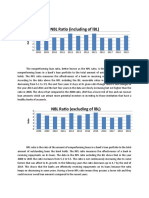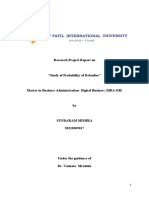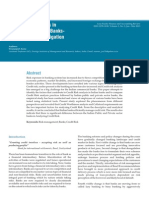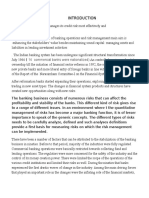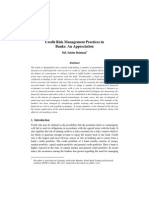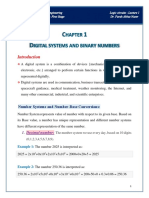0% found this document useful (0 votes)
22 views16 pagesFianl Thesis 2
Chapter II presents the results and findings of a study on credit risk management using secondary data, organized into presentation, analysis, and interpretation sections. It includes various financial ratios such as Credit Deposit Ratio, Non-Performing Assets to Total Loans, and liquidity ratios, highlighting trends over five fiscal years for Global IME Bank Ltd. The analysis indicates fluctuations in credit risk and profitability, emphasizing the importance of effective loan management and liquidity maintenance.
Uploaded by
anujkhanal100Copyright
© © All Rights Reserved
We take content rights seriously. If you suspect this is your content, claim it here.
Available Formats
Download as DOCX, PDF, TXT or read online on Scribd
0% found this document useful (0 votes)
22 views16 pagesFianl Thesis 2
Chapter II presents the results and findings of a study on credit risk management using secondary data, organized into presentation, analysis, and interpretation sections. It includes various financial ratios such as Credit Deposit Ratio, Non-Performing Assets to Total Loans, and liquidity ratios, highlighting trends over five fiscal years for Global IME Bank Ltd. The analysis indicates fluctuations in credit risk and profitability, emphasizing the importance of effective loan management and liquidity maintenance.
Uploaded by
anujkhanal100Copyright
© © All Rights Reserved
We take content rights seriously. If you suspect this is your content, claim it here.
Available Formats
Download as DOCX, PDF, TXT or read online on Scribd
/ 16
